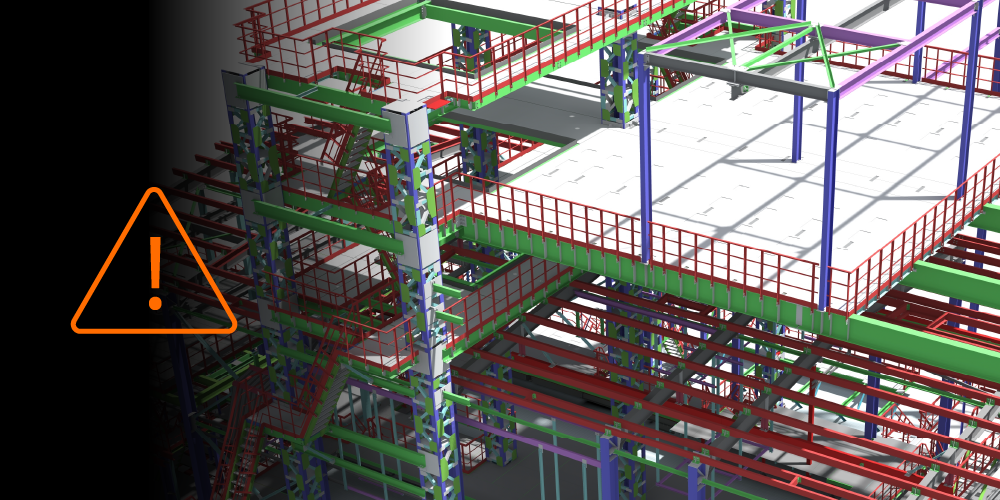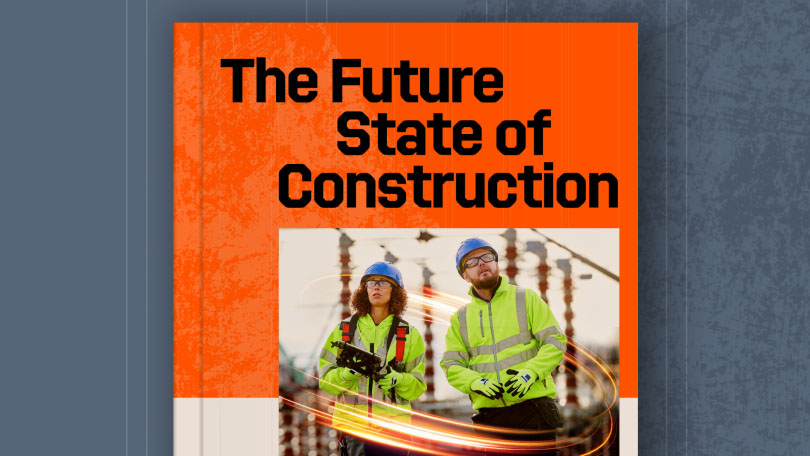Related Articles
— 11 min read
Construction Project Delivery Methods: How the Right Choice Drives Value, Speed and Impact

Last Updated Oct 21, 2025

Josh Krissansen
47 articles
Josh Krissansen is a freelance writer with two years of experience contributing to Procore's educational library. He specialises in transforming complex construction concepts into clear, actionable insights for professionals in the industry.
Last Updated Oct 21, 2025

A poor delivery model can derail even well-planned projects, escalating costs, extending schedules, and eroding value.
As Ghanbaripour et al.’s 2023 study of 40 Australian projects confirmed, value, speed, and impact are the strongest indicators of delivery success, and all three hinge on selecting the right delivery approach from the outset.
This article will help you connect the dots between a construction project’s delivery methods and its cost certainty, risk allocation, collaboration, and overall success outcomes. It provides clear guidance to help project leaders select the model that aligns with their objectives, protects margins, and strengthens long-term performance.
Table of contents
What Are Construction Project Delivery Methods?
Construction project delivery methods are frameworks that outline how owners, designers, and contractors collaborate to move a development from concept to completion. These contractual rules define who carries risk, how decisions are made, and how payments will flow.
Because they’re ‘frameworks,’ there are many to choose from based on project factors such as costs, timelines, and more, which we’ll explore below in further detail.
Choosing the right method — and doing so early in the project lifecycle, such as during initiation or planning — is critical because the decision shapes collaboration, cost control, and accountability. These factors determine whether a project runs smoothly or descends into costly disputes.
Examples in Action: Different Rules, Different Results
To illustrate how delivery models influence outcomes, consider three common approaches:
- Traditional Lump Sum: Owner engages a designer first, then tenders to contractors. This offers upfront price certainty but leaves the contractor with little input in design.
- Design and Construct: The contractor takes on both design and delivery, streamlining accountability and reducing risk for the client, but often at a premium.
- Managing Contractor: The contractor is engaged early to provide input during design and planning, then manages construction under a negotiated contract.
Once Principals settle on their delivery method, they lock in the rules of engagement and set the tone for the entire project, which ultimately determines its success.
Why Choosing the Right Delivery Method Matters
The delivery method dictates contract type, collaboration, and risk allocation, making it one of the most important decisions at project outset.
Costs and Budget
Delivery methods directly influence cost control and budget certainty, determining who carries financial exposure and how overruns are managed.
Some models, like Design-Bid-Build, lock in lump sum pricing but carry higher variation risks. Others, such as alliances, prioritise flexibility and transparency while requiring more upfront management.Timelines
Method choice sets the pace of delivery. Design and Construct models compress schedules by overlapping design and construction, while sequential approaches like Design-Bid-Build extend project duration. Where deadlines are fixed, accelerated methods can prevent costly delays.
Procurement Pathways
The procurement structure flows from the delivery model. It dictates when and how key stakeholders are engaged and how much influence they have on design and costing.
Early Contractor Involvement is a prime example, enabling contractors to flag risks, refine budgets, and strengthen constructability before work begins.Quality Outcomes
Quality performance is shaped by how well the delivery model supports collaboration.
Approaches that enable early input between designers and contractors reduce rework, improve constructability, and minimise disputes. More adversarial models often limit communication, increasing the likelihood of defects and claims.
Straightforward, repeatable work can often use traditional methods, while complex or high-risk builds demand more collaborative structures. But no matter the framework, there’s a prevailing truth about your choice:
A misaligned delivery model amplifies risk, while a well-chosen one protects profitability, client trust, and future work.
Case Study: Major Road Projects Victoria (MRPV)
The experience of Major Road Projects Victoria highlights how delivery model selection shapes outcomes.
Under traditional approaches such as Construct Only, Design and Construct, and PPP, projects often produced losses, adversarial claims, and a race to the lowest price. To address these issues, MRPV introduced the Program Delivery Approach (PDA), which standardised contracts, pre-qualified panels of contractors, and embedded earlier collaboration.
This cut procurement cycle times from 9–12 months to around 6 months, delivered more substantial cost certainty, and fostered greater collaboration, particularly among Tier 3 and 4 contractors.
Types of Construction Delivery Methods
Each framework allocates risk, defines accountability, and shapes how owners, contractors, and designers collaborate. Understanding the strengths and limitations of each is critical to aligning delivery with project objectives.
Design-Bid-Build (DBB)
DBB is a traditional model where the owner engages a designer first, then tenders separately for a head contractor. The process is sequential, with construction only starting once the design is complete.
This method is well-suited to projects with a clearly defined scope where the owner wants maximum design authority and lump sum cost certainty.
Design-Bid-Build (DBB) in Practice
Research Primary School in Victoria, a $5.7 million project, was delivered under Construct Only. The DBB approach gave the client and architect full design control and ensured on-time, on-budget delivery.
Design and Construct (D&C)
D&C combines design and construction under one entity, allowing phases to overlap and providing single-point accountability. Sometimes, it’s extended to Design, Construct, Maintain (DCM) for lifecycle delivery. Here, the head contractor manages contracts with all subcontractors.
This delivery model is a strong option where speed is critical and streamlined communication reduces interface risk.
Design and Construct (D&C) in Practice
The Gateway Upgrade Project in Queensland, worth $2.12 billion, was delivered under a DCM contract by Leighton-Abigroup. The model bundled long-term maintenance with construction, aligning responsibility with lifecycle outcomes.
Managing Contractor
The Managing Contractor model engages a contractor early to advise on design, cost, and constructability, then manages delivery under a cost-reimbursable or target-cost arrangement.
Unlike the U.S. Construction Manager at Risk (CMAR) model, which typically involves a Guaranteed Maximum Price, Australian managing contractors usually share cost and schedule risk with the principal rather than taking it on fully.
Managing Contractor in Practice
The Middleborough Road Rail Separation in Melbourne, a $140 million project, was completed by John Holland within a 20-day rail shutdown. The Managing Contractor model allowed overlapping design and construction, meeting a compressed schedule while managing risk.
Public-Private Partnerships (PPP)
PPP contracts place financing, design, construction, and operations with a private consortium before eventual transfer back to the government. They are widely used in Australia under frameworks such as Partnerships Victoria.
This approach is best suited for large-scale infrastructure where private financing and operational expertise underpin long-term performance.
Public-Private Partnerships (PPP) in Practice
The Victorian Desalination Plant in Wonthaggi, valued at $3.5-4 billion, was delivered as a PPP under a BOT structure. The model enabled private financing and operations, with long-term availability payments to the consortium.
Integrated Project Delivery (IPD)
IPD brings the owner, designer, and contractors under a single agreement that shares risk and reward. It creates a one-team structure with open-book transparency and joint incentives.
This approach is most effective for complex or highly innovative projects where alignment across all stakeholders is critical from day one.
IPD has seen limited uptake in Australia, but its principles appear in alliance contracting, where shared incentives and open-book transparency drive collaborative outcomes.
Alliance Contracting
Alliance contracting is a distinct Australian model closely related to IPD but more widely adopted in public infrastructure. It operates under a “no blame, no dispute” framework with shared risks and rewards.
This model is commonly chosen for high-risk, complex public projects where collaboration and flexibility are essential to manage uncertainty.
Alliance Contracting in Practice
The EastLink Project in Victoria, valued at $2.5 billion, used an alliance structure with a Target Outturn Cost. Despite scope changes, collaboration under the alliance kept costs close to the target and disputes to a minimum.
Construction Management Multi-Prime (CMMP)
CMMP involves the owner contracting directly with multiple trade contractors, usually with a construction manager acting as advisor. It calls for significant owner involvement to coordinate effectively.
This structure is occasionally used by highly experienced owners or public agencies with the resources to manage multiple direct contracts.
Engineering, Procurement, Construction (EPC)
EPC places full responsibility for design, procurement, and construction on the contractor, delivering a complete turnkey facility. It is common in mining and energy projects.
This model suits large, technically complex projects where single-point accountability simplifies integration and delivery.
Engineering, Procurement, Construction (EPC) in Practice
The Roy Hill Iron Ore Project in WA, valued at over $10 billion, used EPC packages managed by Samsung C&T, Downer EDI, and NRW. The model centralised accountability and enabled ramp-up despite schedule pressures.
Engineering, Procurement, Construction Management (EPCM)
EPCM contracts require the contractor to manage design and trade contracts on the owner’s behalf rather than taking them on directly. This gives the owner more control while still providing integrated oversight.
This method is often chosen for very large mining and industrial projects where owners want direct control of procurement but need external management expertise.
Engineering, Procurement, Construction Management (EPCM) in Practice
The Olympic Dam Expansion in SA, projected at $30 billion, was structured under EPCM with Jacobs and WorleyParsons. Although deferred, the framework guided feasibility and early works planning.
Turnkey / Build-Operate-Transfer (BOT)
BOT contracts allow a private entity to design, build, and operate a project before transferring ownership back to the public sector after a concession period. They are common in major infrastructure such as water plants and toll roads.
This delivery model is typically used when governments seek private financing and operational capability alongside project delivery.
How to Choose the Best Project Delivery Method
The right delivery depends on project type, owner objectives, risk appetite, schedule, budget certainty, and available expertise. The decision must be made before tendering, as it defines contracts, procurement pathways, risk allocation, and collaboration structures.
Project Type and Complexity
The level of complexity determines how much flexibility the delivery model must provide. Straightforward projects with predictable scope can succeed under rigid structures, while innovative or high-risk builds demand more collaborative models.
- Straightforward projects: DBB or D&C provide clarity and efficiency where the scope is well defined.
- Complex or innovative projects: Managing Contractor or alliances allow early contractor involvement and flexibility to manage uncertainty.
- Large public infrastructure: PPPs or alliances balance public oversight with private financing and delivery expertise.
- Private commercial developments: D&C often delivers faster turnaround.
Multiple local governments coordinated procurement for reseal works in the South-west Queensland Road Reseal. The standardised approach produced ~20% cost savings, showing that straightforward contracts benefit simple, repeatable projects.
Owner’s Control and Risk Tolerance
Delivery methods vary in how much design control the owner retains and how risks are allocated. Misalignment here creates disputes and cost exposure.
This was evident in the Gallipoli Underpass project in South Australia, where Early Contractor Involvement during design improved cost modelling, risk identification, and constructability planning in a constrained urban site.
- Maximum control: DBB gives owners design authority but exposes them to more variation risk.
- Shared risk: Alliances and IPD distribute responsibility equally across stakeholders.
- Risk transfer: PPPs transfer most risk to the private partner. The Managing Contractor shifts cost and schedule risk under a Guaranteed Maximum Price.
- Balanced trade-off: EPC contracts reduce owner involvement but transfer responsibility to the contractor. If owners require constructability input, early contractor involvement or novated EPC is a better fit.
Schedule Urgency
Immovable deadlines demand delivery models that overlap phases and accelerate progress.
- Fixed deadlines: D&C and Managing Contractor compress schedules by running design and construction concurrently.
- Flexible schedules, strict budgets: DBB provides cost certainty but extends timelines.
- Uncertain conditions: Early Contractor Involvement within collaborative models prevents delays through better risk forecasting.
The Northern Busway in Queensland demonstrated the importance of smart method selection. Delivered under the Managing Contractor model, the project overlapped design and construction to reduce delivery time and meet critical deadlines.
Budget and Cost Certainty
Cost management is one of the most decisive factors, as delivery models define how prices are set, who carries overruns, and how variations are handled.
- Fixed budgets: DBB lump sum or Managing Contractor with a Guaranteed Maximum Price control exposure to overruns.
- Lowest upfront cost: DBB appeals in competitive bidding but often increases the risk of later disputes.
- Uncertain scope: IPD and other collaborative methods handle evolving designs effectively, though at higher upfront involvement costs.
Expertise and Resources
The owner’s capability heavily influences which model is viable, as sophisticated delivery methods demand strong in-house management.
- High capability owners: Multi-prime and alliance contracting require mature contract management and oversight.
- Limited expertise: D&C and Managing Contractor reduce the management burden while providing contractor expertise.
- Principal capability as a success factor: Performance depends on whether the Principal can oversee risk, contracts, and buildability. PwC’s Delivery Models for the Energy Transition report notes that when Principals lack these skills, collaborative models such as EPCM, PCM, or alliances reduce exposure to disputes and overruns.
Construction project delivery methods shape cost, speed, and long-term outcomes
The chosen delivery model defines how risk is shared, how efficiently work proceeds, and how reliably quality targets are achieved.
Builders can protect profitability, deliver projects faster, and strengthen long-term client relationships by aligning delivery methods with project type, owner capability, and commercial objectives.
Categories:
Written by

Josh Krissansen
47 articles
Josh Krissansen is a freelance writer with two years of experience contributing to Procore's educational library. He specialises in transforming complex construction concepts into clear, actionable insights for professionals in the industry.
View profileExplore more helpful resources

Managing Direct Costs in Construction: How Visibility Drives Profitability
Direct costs define the financial reality of every construction project. They cover the labour, materials, and equipment that drive delivery and determine profitability. But even the best-planned budgets can shift...

BIM Clash Detection: Reducing Rework, Delays, and Risk in Construction
Design clashes can be a significant hidden cost in construction, as each conflict between systems risks expensive rework, project delays, and reduced margins. BIM clash detection empowers teams to identify...

Next-Gen Job-Costing: Ready to Move? 5 Things to Consider Before You Get Started
In this three-part series, Quantity Surveyor turned Financial Solutions Specialist Clint Burgess uncovers the real-world gains for people, processes, and profits when businesses move from legacy to next-generation Enterprise Resource...

From Workarounds to Workflow: Solving Construction’s Legacy Job-Costing System Challenges with Next-Gen Tools
In this three-part series, Quantity Surveyor turned Financial Solutions Specialist Clint Burgess uncovers the real-world gains for people, processes, and profits when businesses move from legacy to next-generation Enterprise Resource...
